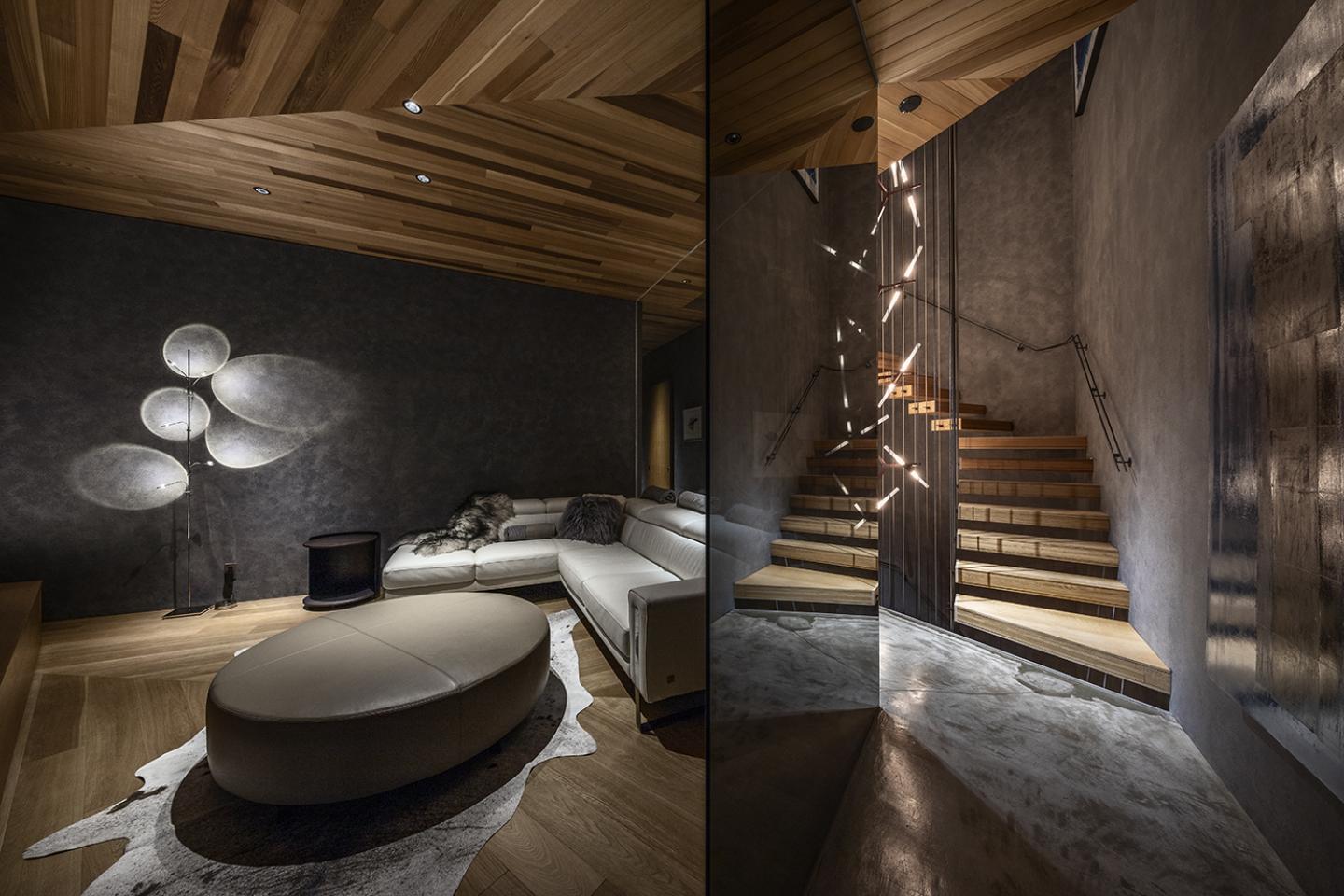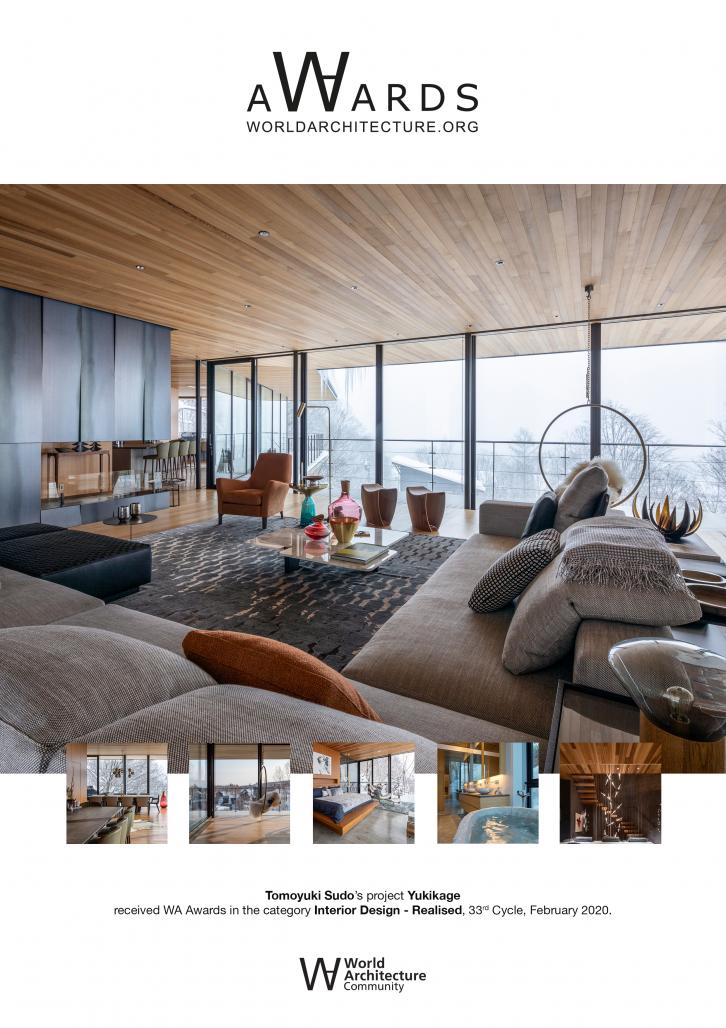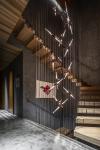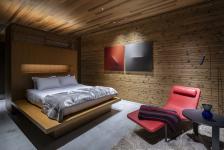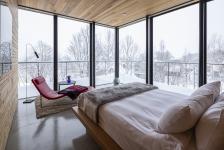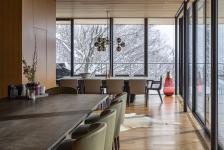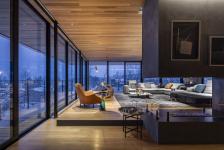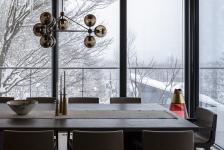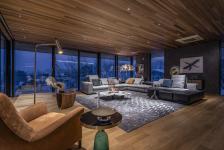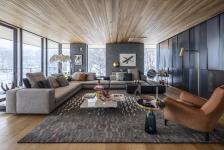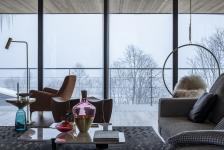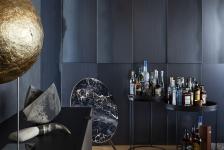In Japanese, ‘yuki’ means snow, and ‘kage’ means shadow. Put together, the name of the house Yukikage directly refers to its architectural parti of a three-story home whose exaggerated ceiling eaves on each floor, drops shadows onto the surrounding blanket of snow.
As a result, the horizontal layers of the house’s three stories are clearly delimited. The wing-like gesture of the eaves gives animation to the architecture, and the soaring language represents the house’s desire to embrace the beautiful, natural environment.
Every part of the house is designed to direct views toward the prime vista of Mt. Yotei in the distance. The house’s L-shape plan facilitates this intent. Its specific form is derived from the meeting of two-axis lines derived from the site so that one half of the house follows the land’s natural topography from the forest side and the other half points toward Mt. Yotei.
The all-round glazing also maximizes views to Mt. Yotei. In the second story, all bedrooms are able to see Mt. Yotei. Communal spaces are elevated onto the third story for the family to embrace the views when together, especially when entertaining guests. With minimal walls between the living, kitchen, and living, fluidity of movement is enhanced throughout. The view is also continuous, regardless of where they are in the uninterrupted space.
The glass walls at each end of the house wrap around to continue the panorama. Balconies along the full perimeter of the house on the second and third stories further invite occupants a more thorough engagement with nature.
The house is tucked against a slope, so logically the structural core borders this elevation. This frees up the rest of the space to be only supported by slender steel posts at the edge and enables a wide expanse of glass around the perimeter.
An orchestration of moods – from dark to light, enclosed to open, contemplation to the celebration – informs the finishing of each story’s interior to reflect the immediate environment.
The ground story mostly constitutes grey textured paint on the walls and grey stone floor tiles to enhance the feeling of being near the earth. The second story is finished with gloss-coated concrete flooring and timber walls and ceiling to mimic the atmosphere of a forest. In the third story, wood surfaces dominate, positioned in an outward direction to draw the eye out toward nature and sky.
Connecting the three levels is a staircase sculpted with a void in the center. Within this voluminous space, droplights dramatically rain down through three stories as a connecting element. The play of light and shadow invites drama into the entryway as a surprising introduction into the home.
Designed with sustainability in mind, the house breathes easily and allows easy, fuss-free living for the occupants in harmony with the environment. The wide overhangs extend 1.6 meters from the building’s edge to mitigate strong summer sunlight. In winter, the lowering of the sun sends rays through from under the eaves to warm up the interiors.
Aside from the specification of insulated double glass that retains internal heat, the house enjoys passive air circulation through the staircase void. The heat from the ground story moves upward to warm the house naturally. Such methods provide internal comfort in winter using less energy.
Yukikage is an anomaly in the neighborhood not only for its dynamic form. The generous façade of glass is also uncommon as most local houses are encased in solid walls with few windows. These characteristics enable the interior and exterior to become one. Occupants are invited to participate in celebrating the prodigious beauty of the context that elevates the commonality of daily life.
2016
2017
Structure : RC structure
Site area : 1183.97㎡
Total floor area : 451.27㎡
Building site : Hokkaido, Japan
Structure design : structured environment
Lighting design : Lighting M
Contractor : SUDO Construction Co., Ltd.
Furniture & Accessories: Sanctuary Niseko
Tomoyuki Sudo
Momoyo Yamawaki
Mimi Okuhara
Yukikage by Tomoyuki Sudo in Japan won the WA Award Cycle 33. Please find below the WA Award poster for this project.
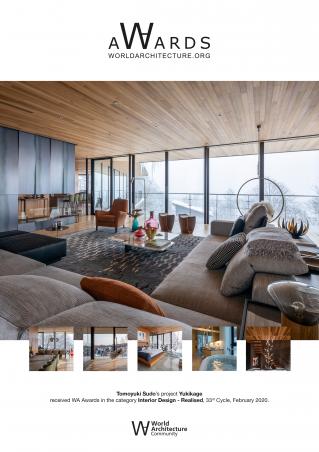
Downloaded 15 times.
Favorited 1 times
